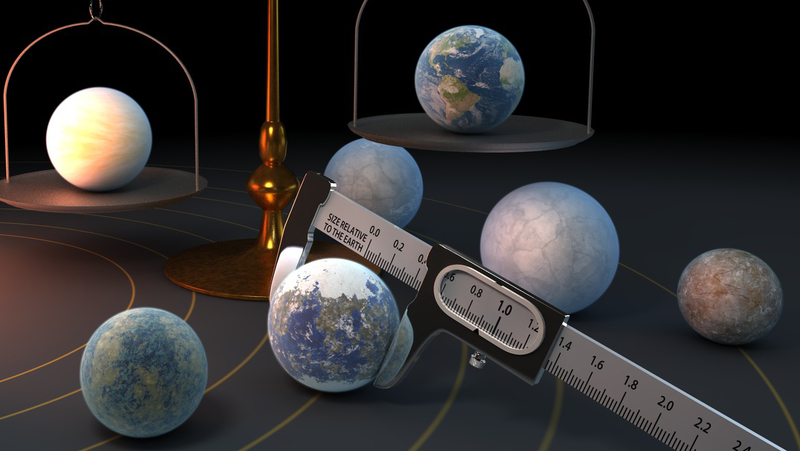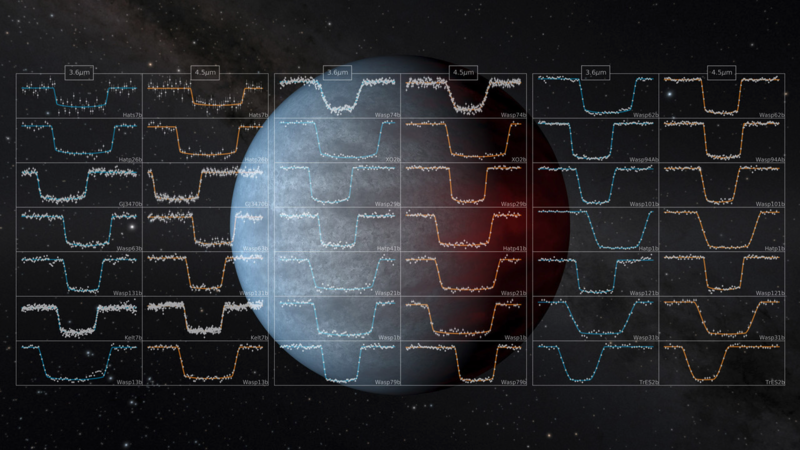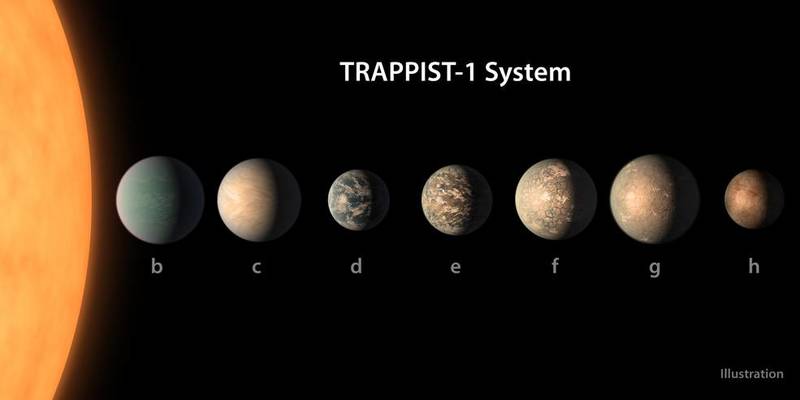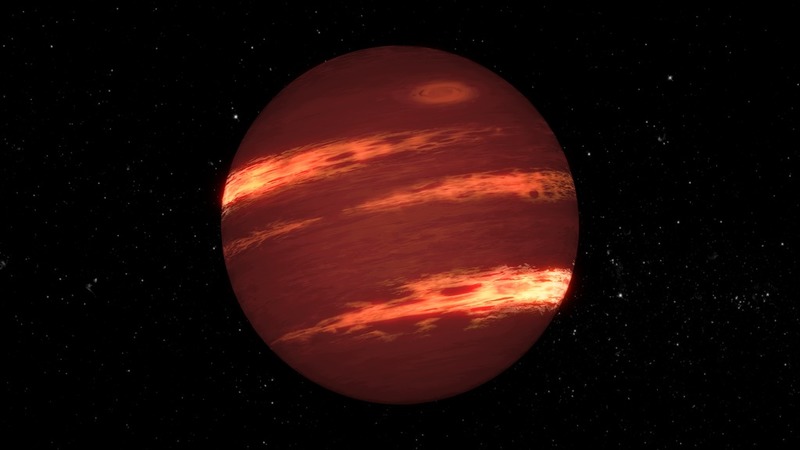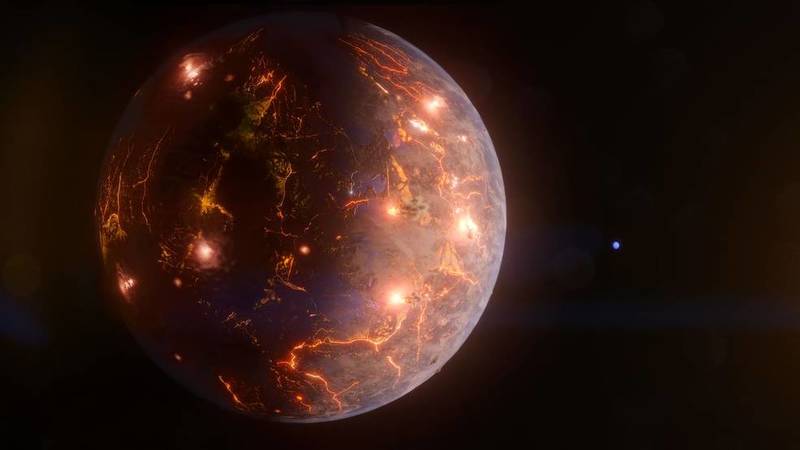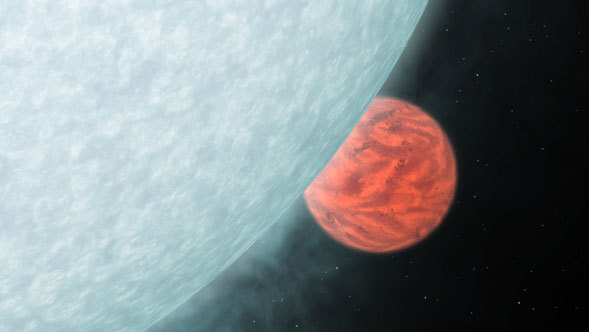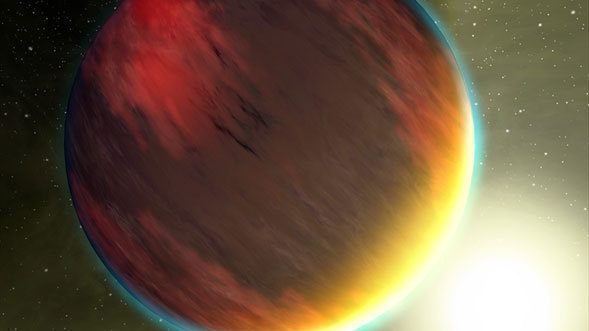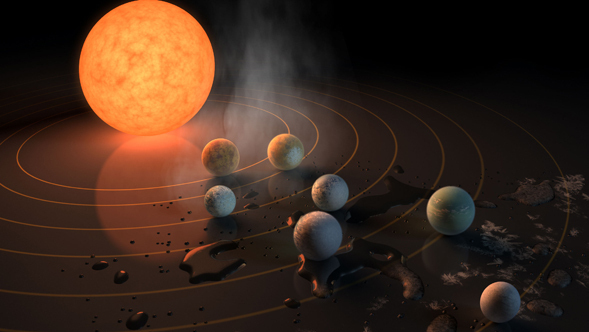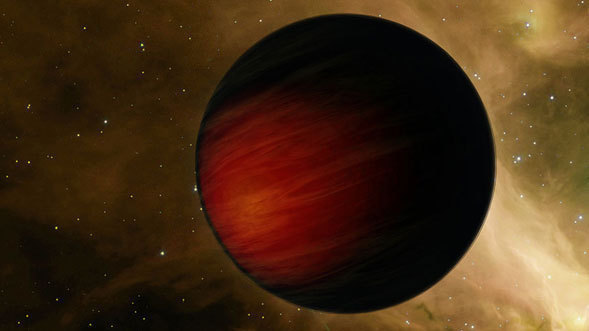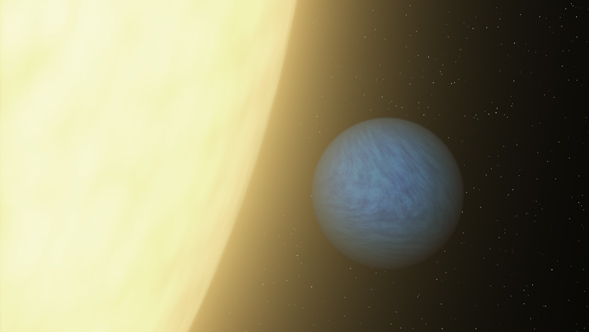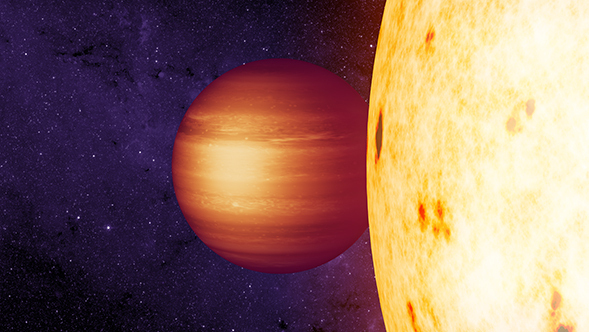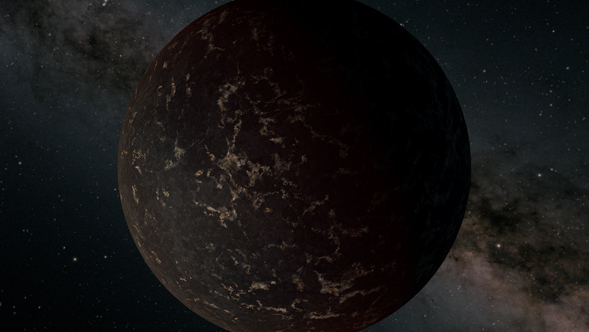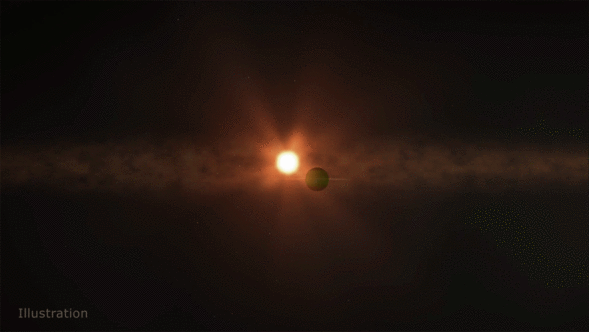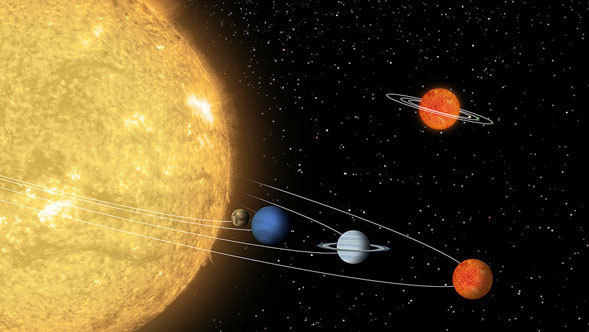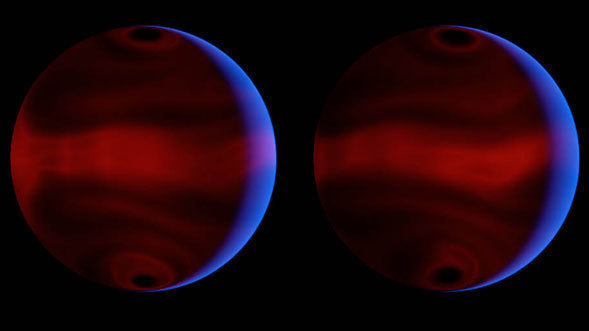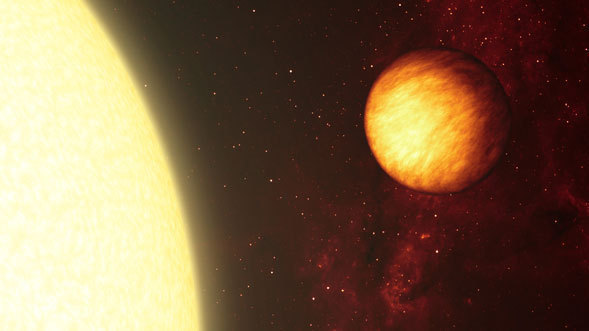Discovering and studying planets that orbit stars other than our sun have become one of the most active areas of astronomy in the past decades. When Spitzer launched in 2003 this was not one of its intended science objectives, but innovations by astronomers and engineers during its mission improved its precision and enabled it to become a critical tool for exoplanet work.
Spitzer was the first to measure how much light was emitted by exoplanets closely orbiting their stars, and has played a key role in discovering and measuring the properties of everything from planets larger than Jupiter to small rocky worlds that may be similar to Earth.
Precise measurements reveal that the exoplanets have remarkably similar densities, which provides clues about their composition.
Among the first, and strangest, planets to be detected around other stars is a variety known as “hot Jupiters” – star-hugging, superheated giants once thought so unlikely that many scientists doubted their existence.
Five years ago, astronomers revealed a spectacular collection of other worlds: the TRAPPIST-1 system.
The infrared observatory may help answer questions about planets outside our solar system, or exoplanets, including how they form and what drives weather in their atmospheres.
Astronomers have discovered an Earth-size exoplanet, or world beyond our solar system, that may be carpeted with volcanoes. Called LP 791-18 d, the planet could undergo volcanic outbursts as often as Jupiter’s moon Io, the most volcanically active body in our solar system.
NASA's Spitzer Space Telescope has for the first time captured the light from two known planets orbiting stars other than our Sun. The findings mark the beginning of a new age of planetary science, in which "extrasolar" planets can be directly measured and compared.
NASA's Spitzer Space Telescope has captured for the first time enough light from planets outside our solar system, known as exoplanets, to identify molecules in their atmospheres. The landmark achievement is a significant step toward being able to detect possible life on rocky exoplanets and comes years before astronomers had anticipated.
NASA's Spitzer Space Telescope has revealed the first known system of seven Earth-size planets around a single star. Three of these planets are firmly located in the habitable zone, the area around the parent star where a rocky planet is most likely to have liquid water.
The double sunset that Luke Skywalker gazed upon in the film Star Wars might not be a fantasy.
Researchers using NASA's Spitzer Space Telescope have learned what the weather is like on two distant, exotic worlds. One team of astronomers used the infrared telescope to map temperature variations over the surface of a giant gas planet, HD 189733b, revealing it likely is whipped by roaring winds. Another team determined that the gas planet HD 149026b is the hottest yet discovered.
NASA's Spitzer Space Telescope has detected light emanating from a "super-Earth" planet beyond our solar system for the first time. While the planet is not habitable, the detection is a historic step toward the eventual search for signs of life on other planets.
NASA's Spitzer Space Telescope has teamed up with a telescope on the ground to find a remote gas planet about 13,000 light-years away, making it one of the most distant planets known.
The hottest point on a gaseous planet near a distant star isn’t where astrophysicists expected it to be – a discovery that challenges scientists’ understanding of the many planets of this type found in solar systems outside our own.
A new study using data from NASA's Spitzer Space Telescope provides a rare glimpse of conditions on the surface of a rocky planet orbiting a star beyond the Sun.
The newly discovered planet is orbiting a star still encircled by the disk of material from which both objects formed, giving scientists a glimpse at early planet evolution.
Planets are everywhere these days. They have been spotted around more than 150 stars, and evidence is growing that they also circle "failed," or miniature, stars called brown dwarfs. Now, astronomers using NASA's Spitzer Space Telescope say they have found what may be planets-in-the-making in the strangest of places -- around a brown dwarf that itself is the size of a planet.
NASA's Spitzer Space Telescope has observed a planet that heats up to red-hot temperatures in a matter of hours before quickly cooling back down.
NASA's Spitzer Space Telescope has made the first measurements of the day and night temperatures of a planet outside our solar system. The infrared observatory revealed that the Jupiter-like gas giant planet circling very close to its sun is always as hot as fire on one side, and potentially as cold as ice on the other.
A study combining observations from NASA’s Hubble and Spitzer space telescopes reveals that the distant planet HAT-P-26b has a primitive atmosphere composed almost entirely of hydrogen and helium.
Scientists have discovered a new planet with the mass of Earth, orbiting its star at the same distance that we orbit our sun. The planet is likely far too cold to be habitable for life as we know it, however, because its star is so faint. But the discovery adds to scientists' understanding of the types of planetary systems that exist beyond our own.
Astronomers have discovered the youngest fully formed exoplanet ever detected. The discovery was made using NASA's Kepler Space Telescope and its extended K2 mission, as well as the W. M. Keck Observatory on Mauna Kea, Hawaii. Exoplanets are planets that orbit stars beyond our sun.
Observations from NASA's Spitzer Space Telescope have led to the first temperature map of a super-Earth planet -- a rocky planet nearly two times as big as ours. The map reveals extreme temperature swings from one side of the planet to the other, and hints that a possible reason for this is the presence of lava flows.
How do some gas giant planets end up so feverishly close to their stars? NASA's Spitzer Space Telescope finds new clues.
The fantasy creations of the "Star Wars" universe are strikingly similar to real planets in our own Milky Way galaxy. A super Earth in deep freeze? Think ice-planet "Hoth." And that distant world with double sunsets can't help but summon thoughts of sandy "Tatooine."
A survey of 10 hot, Jupiter-sized exoplanets conducted with NASA’s Hubble and Spitzer space telescopes has led a team to solve a long-standing mystery -- why some of these worlds seem to have less water than expected.
Using NASA's Spitzer Space Telescope, astronomers have confirmed the discovery of the nearest rocky planet outside our solar system, larger than Earth and a potential gold mine of science data.
The wacky world of exoplanets continues to surprise astronomers. They wouldn't float like balloons or give you the chance to talk in high, squeaky voices, but planets with helium skies may constitute an exotic planetary class in our Milky Way galaxy.
